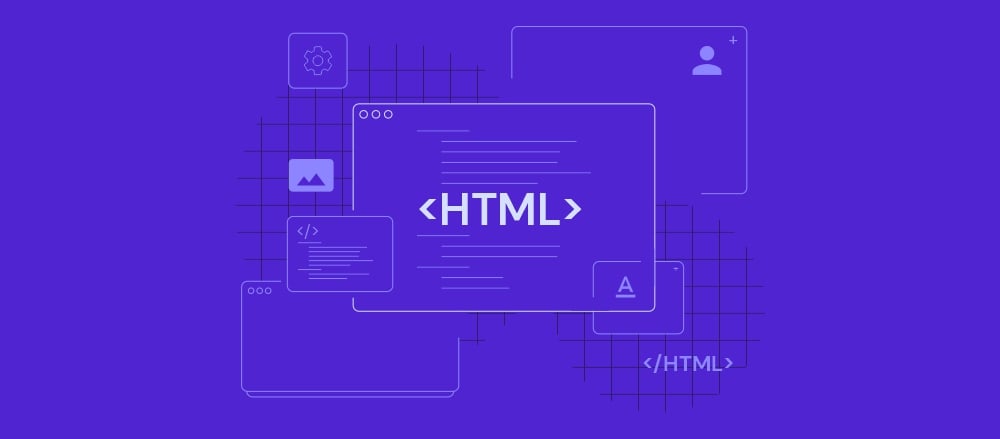
HTML is the standard markup language for creating web pages and web applications. With Cascading Style Sheets (CSS) and JavaScript, it forms a triad of foundational technologies for the World Wide Web. Web browsers receive HTML documents from a web server or from local storage and render them into multimedia web pages. HTML describes the structure of a web page semantically and originally included cues for the appearance of the document.
Table of contents
-
-
- What is HTML?
- The History of HTML
- How HTML Works
- What Can You Do With HTML?
- Learning HTML
- Conclusion
-
What is HTML?
Hypertext Markup Language, or HTML, is the standard markup language for creating web pages and web applications. With Cascading Style Sheets (CSS) and JavaScript, it forms a triad of cornerstone technologies for the World Wide Web.
HTML is used to structure content for web pages. CSS is used to style that content. And JavaScript can be used to add interactive behavior to web pages.
HTML consists of a series of elements that you can use to add structure and meaning to your content. For example, you can use HTML elements to define headings, paragraphs, lists, links, and more.
When you create an HTML document, you must include a DOCTYPE declaration at the top of the document. The DOCTYPE declaration tells the web browser what type of document to expect.
You can also use HTML to add images, videos, and other media to your web pages. And with HTML5, you can even create sophisticated applications that run in the browser without needing any additional plugins or libraries.
The History of HTML
HTML was created in 1989 by Tim Berners-Lee while working at CERN. The goal was to create a standard way to encode documents so that they could be shared between computers. HTML was based on SGML, and allowed for the creation of hypertext links.
The first version of HTML was very simple, and only included a handful of tags. Subsequent versions added more tags, and eventually CSS and JavaScript were added to allow for more complex webpages. Today, HTML is the standard markup language for creating webpages and web applications.
How HTML Works
Hypertext Markup Language (HTML) is the standard markup language for creating web pages and web applications. With Cascading Style Sheets (CSS) and JavaScript, it forms a triad of cornerstone technologies for the World Wide Web.
Web browsers receive HTML documents from a web server or from local storage and render them into multimedia web pages. HTML describes the structure of a web page semantically and originally included cues for the appearance of the document.
HTML elements are the building blocks of HTML pages. With HTML constructs, images and other objects such as interactive forms may be embedded into the rendered page. It provides a means to create structured documents by denoting structural semantics for text such as headings, paragraphs, lists, links, quotes and other items. HTML elements are delineated by tags, written using angle brackets.
Multimedia content creators can use HTML to embed images, video clips, audio content, and plug-ins in their web pages that can be played without requiring additional software downloads.
What Can You Do With HTML?
Hypertext Markup Language, or HTML, is the standard markup language for creating web pages and web applications. With HTML you can create your own website.
Learning HTML
HTML is the standard markup language for creating websites and web applications. It defines the structure and layout of your content, and you can control how your content looks by adding HTML tags.
If you want to learn HTML, we recommend checking out our list of resources below. With these resources, you can start learning HTML quickly and easily.
-
-
- HTML is easy to learn – You will enjoy it!
- HTML is simple to code
- All Browsers support HTML
- HTML is Free
-
Conclusion
Hypertext Markup Language, or HTML, is the standard markup language for creating web pages and web applications. With HTML you can create your own website. This guide gives an overview of the basics of HTML so that you can get started coding your own website today.

